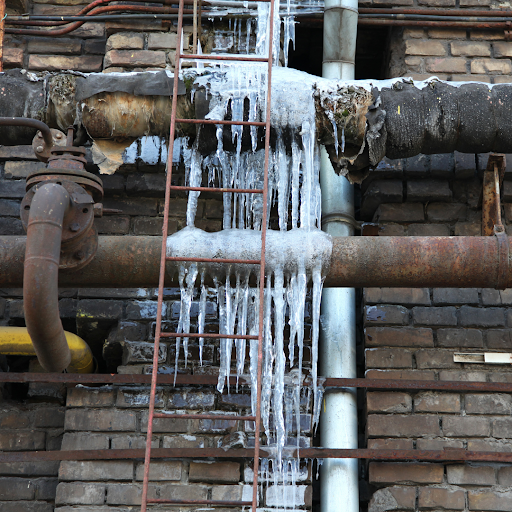Crucial Tips to Protect Against Frozen Pipes in Winter
Crucial Tips to Protect Against Frozen Pipes in Winter
Blog Article
We've found this post involving 6 Ways to Prevent Frozen Pipes listed below on the web and reckoned it made sense to share it with you on my blog.
:strip_icc()/snow-outdoor-faucet-pipes-4af65d1e5e904fb1aa7bf74071fe5d89.jpg)
Cold weather can damage your pipes, specifically by freezing pipes. Below's just how to prevent it from happening and what to do if it does.
Intro
As temperature levels decrease, the danger of frozen pipelines rises, potentially leading to pricey repair work and water damage. Recognizing just how to avoid frozen pipelines is crucial for property owners in cold climates.
Prevention Tips
Insulating vulnerable pipelines
Cover pipes in insulation sleeves or use warmth tape to safeguard them from freezing temperatures. Focus on pipes in unheated or exterior areas of the home.
Heating strategies
Maintain indoor spaces properly heated, especially locations with pipes. Open closet doors to permit warm air to flow around pipelines under sinks.
Just how to determine icy pipes
Seek reduced water flow from taps, uncommon odors or noises from pipes, and visible frost on revealed pipes.
Long-Term Solutions
Architectural modifications
Think about rerouting pipes away from outside wall surfaces or unheated areas. Include extra insulation to attic rooms, cellars, and crawl spaces.
Upgrading insulation
Invest in premium insulation for pipes, attics, and walls. Proper insulation assists maintain consistent temperature levels and lowers the threat of icy pipes.
Safeguarding Outdoor Plumbing
Yard hoses and outdoor faucets
Disconnect and drain garden pipes prior to winter. Mount frost-proof faucets or cover exterior taps with shielded caps.
Understanding Frozen Pipelines
What triggers pipes to ice up?
Pipes freeze when exposed to temperatures listed below 32 ° F (0 ° C) for prolonged periods. As water inside the pipelines freezes, it broadens, putting pressure on the pipeline walls and potentially causing them to break.
Risks and problems
Frozen pipes can bring about supply of water disturbances, residential property damages, and costly fixings. Ruptured pipelines can flood homes and cause substantial structural damages.
Indications of Frozen Pipes
Determining frozen pipes early can stop them from breaking.
What to Do If Your Pipelines Freeze
Immediate actions to take
If you suspect icy pipes, keep taps open up to eliminate pressure as the ice thaws. Utilize a hairdryer or towels soaked in warm water to thaw pipes gradually.
Verdict
Stopping frozen pipelines needs proactive procedures and quick responses. By comprehending the causes, indications, and preventive measures, homeowners can secure their plumbing during cold weather.
5 Ways to Prevent Frozen Pipes
Drain Outdoor Faucets and Disconnect Hoses
First, close the shut-off valve that controls the flow of water in the pipe to your outdoor faucet. Then, head outside to disconnect and drain your hose and open the outdoor faucet to allow the water to completely drain out of the line. Turn off the faucet when done. Finally, head back to the shut-off valve and drain the remaining water inside the pipe into a bucket or container. Additionally, if you have a home irrigation system, you should consider hiring an expert to clear the system of water each year.
Insulate Pipes
One of the best and most cost-effective methods for preventing frozen water pipes is to wrap your pipes with insulation. This is especially important for areas in your home that aren’t exposed to heat, such as an attic. We suggest using foam sleeves, which can typically be found at your local hardware store.
Keep Heat Running at 65
Your pipes are located inside your walls, and the temperature there is much colder than the rest of the house. To prevent your pipes from freezing, The Insurance Information Institute suggests that you keep your home heated to at least 65 degrees, even when traveling. You may want to invest in smart devices that can keep an eye on the temperature in your home while you’re away.
Leave Water Dripping
Moving water — even a small trickle — can prevent ice from forming inside your pipes. When freezing temps are imminent, start a drip of water from all faucets that serve exposed pipes. Leaving a few faucets running will also help relieve pressure inside the pipes and help prevent a rupture if the water inside freezes.
Open Cupboard Doors
Warm your kitchen and bathroom pipes by opening cupboards and vanities. You should also leave your interior doors ajar to help warm air circulate evenly throughout your home.

I recently found that article on Preventing and dealing with frozen pipes while doing a lookup on the search engines. Make sure you take the opportunity to promote this write-up if you enjoyed it. Thank you for being here. Don't forget to check up our website back soon.
Visit My Website Report this page